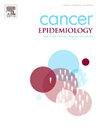Global burden and international trends of laryngeal cancer incidence: A population-based study of recorded data and national estimates
IF 2.3
3区 医学
Q3 ONCOLOGY
引用次数: 0
Abstract
Laryngeal cancer shows considerable variation in global incidence, which has primarily been studied through national estimates. This study aims to analyse the global incidence of laryngeal cancer, comparing estimated and high-quality recorded data, and examine temporal trends to inform targeted prevention strategies. Estimated incidence rates for 2022 were obtained from the GLOBOCAN 2022 database for 185 countries. Recorded incidence data from population-based cancer registries (PBCRs) for the five-years period 2013–2017 were sourced from Cancer Incidence in Five Continents (CI5-XII). Temporal trends and the Estimated Annual Percent Change were assessed for 34 countries using the Global Cancer Observatory – Cancer Over Time database. The highest estimated age-standardized incidence rates (ASIRs) were observed in Cuba, Moldova, and Romania, particularly among males: 14.8, 12.2, and 10.3 per 100,000, respectively. Recorded data showed significant regional variability, with the highest ASIRs for males in Pskov, Russia (13.3 per 100,000) and the Azores, Portugal (11.8 per 100,000). Most countries exhibited a decline in laryngeal cancer rates among males, while trends among females remained largely stable. Our findings underscore the importance of PBCRs in identifying high-risk populations for developing laryngeal cancer. While national estimates are essential for understanding the global distribution of laryngeal cancer and other malignancies, they may overlook subnational variations. Expanding the coverage and quality of PBCRs is crucial for improving cancer surveillance and enhancing prevention and control efforts at national and global level.
喉癌发病率的全球负担和国际趋势:记录数据和国家估计的基于人群的研究。
喉癌在全球发病率中表现出相当大的差异,这主要是通过国家估计来研究的。本研究旨在分析喉癌的全球发病率,比较估计和高质量的记录数据,并研究时间趋势,为有针对性的预防策略提供信息。2022年的估计发病率来自185个国家的GLOBOCAN 2022数据库。2013-2017年五年期间基于人群的癌症登记处(pbcr)记录的发病率数据来自五大洲癌症发病率(CI5-XII)。使用全球癌症观察站-癌症随时间变化数据库评估了34个国家的时间趋势和估计的年度百分比变化。古巴、摩尔多瓦和罗马尼亚的估计年龄标准化发病率(asir)最高,尤其是男性:分别为14.8、12.2和10.3 / 10万。记录的数据显示了显著的区域差异,俄罗斯普斯科夫(13.3 / 10万)和葡萄牙亚速尔群岛(11.8 / 10万)的男性asir最高。大多数国家的男性喉癌发病率下降,而女性的趋势基本保持稳定。我们的研究结果强调了pbcr在识别喉癌高危人群中的重要性。虽然国家估计对于了解喉癌和其他恶性肿瘤的全球分布至关重要,但它们可能忽略了国家以下地区的差异。扩大pbcr的覆盖范围和质量对于在国家和全球层面改善癌症监测和加强预防和控制工作至关重要。
本文章由计算机程序翻译,如有差异,请以英文原文为准。
求助全文
约1分钟内获得全文
求助全文
来源期刊

Cancer Epidemiology
医学-肿瘤学
CiteScore
4.50
自引率
3.80%
发文量
200
审稿时长
39 days
期刊介绍:
Cancer Epidemiology is dedicated to increasing understanding about cancer causes, prevention and control. The scope of the journal embraces all aspects of cancer epidemiology including:
• Descriptive epidemiology
• Studies of risk factors for disease initiation, development and prognosis
• Screening and early detection
• Prevention and control
• Methodological issues
The journal publishes original research articles (full length and short reports), systematic reviews and meta-analyses, editorials, commentaries and letters to the editor commenting on previously published research.
 求助内容:
求助内容: 应助结果提醒方式:
应助结果提醒方式:


